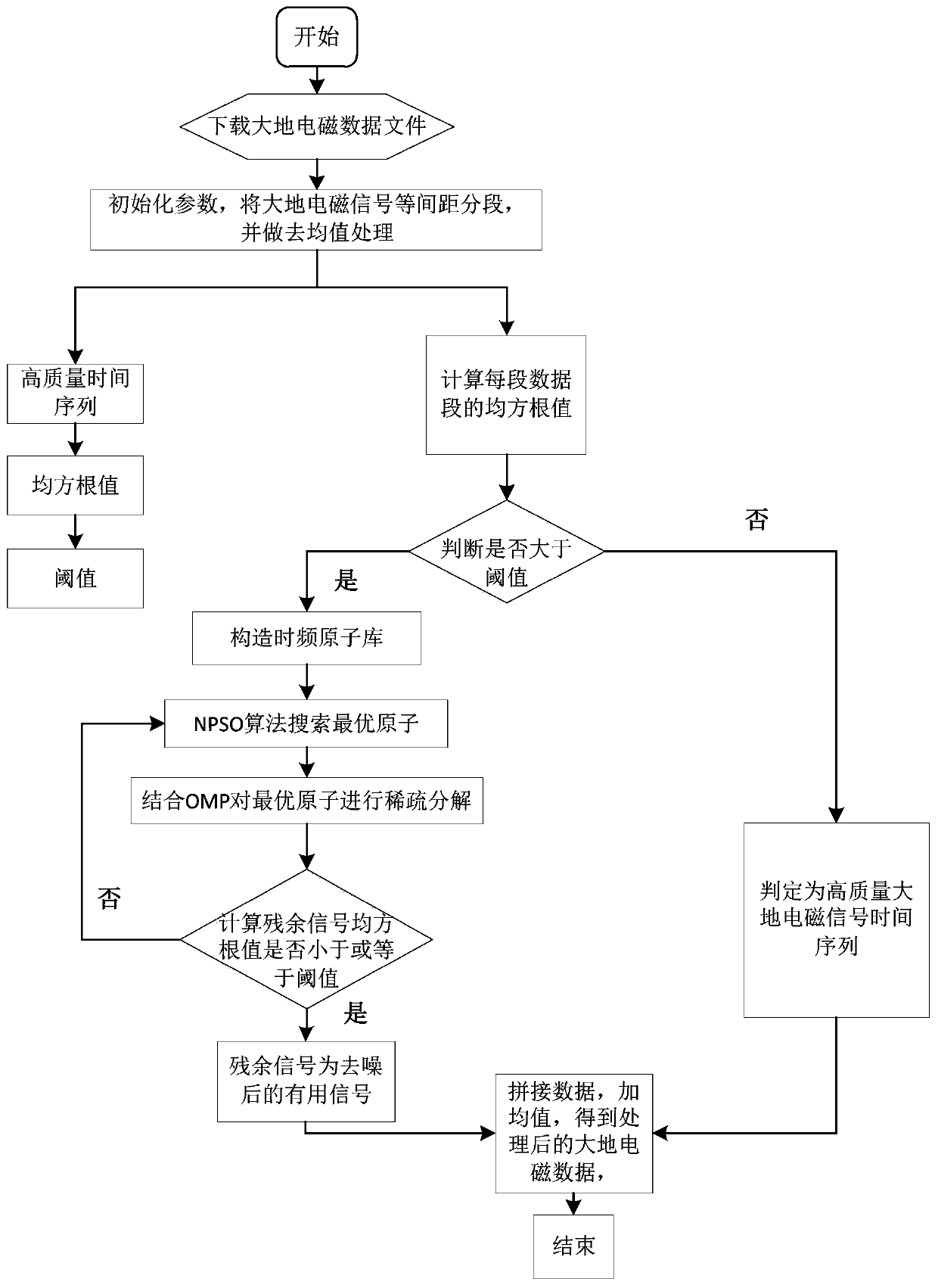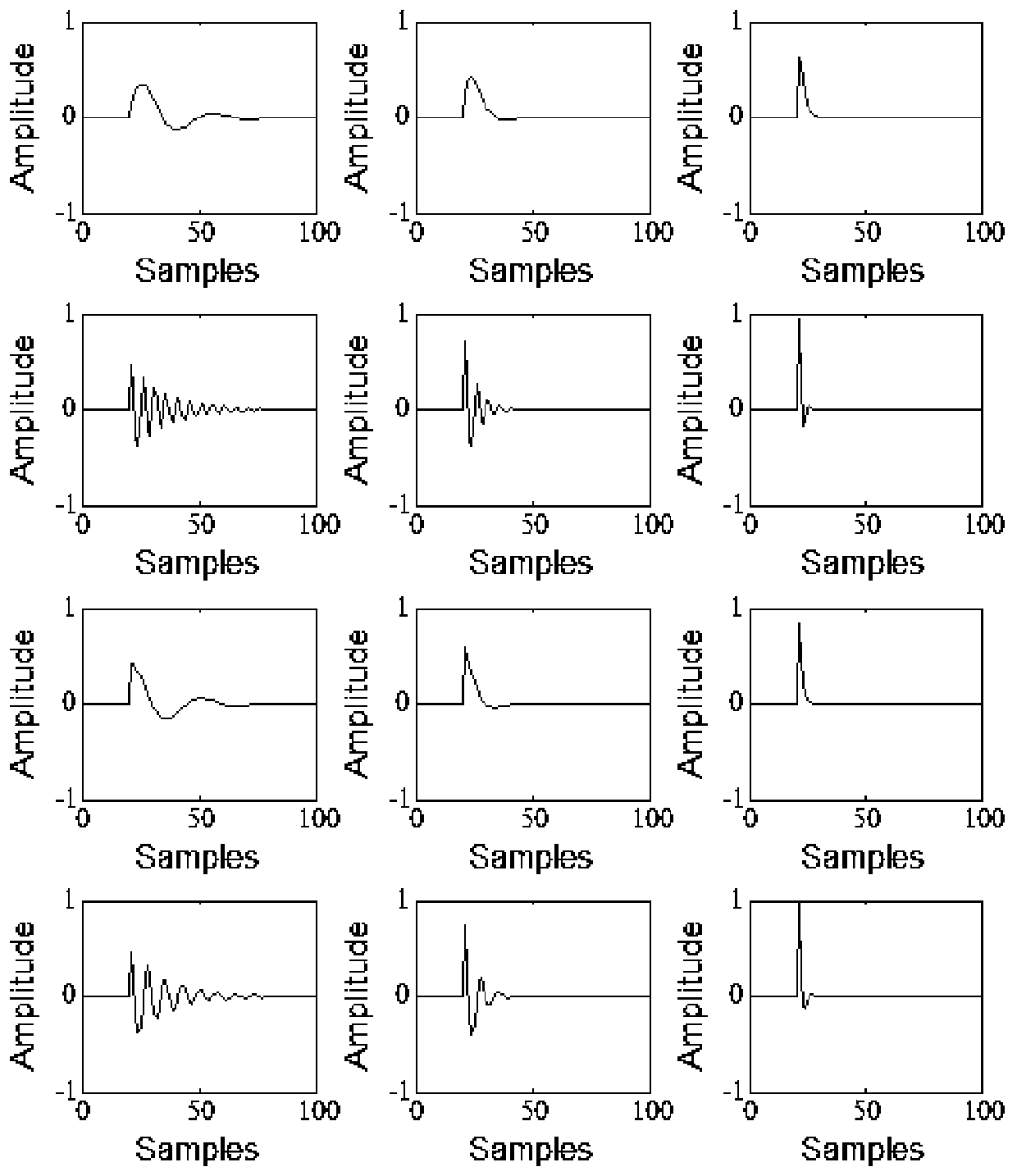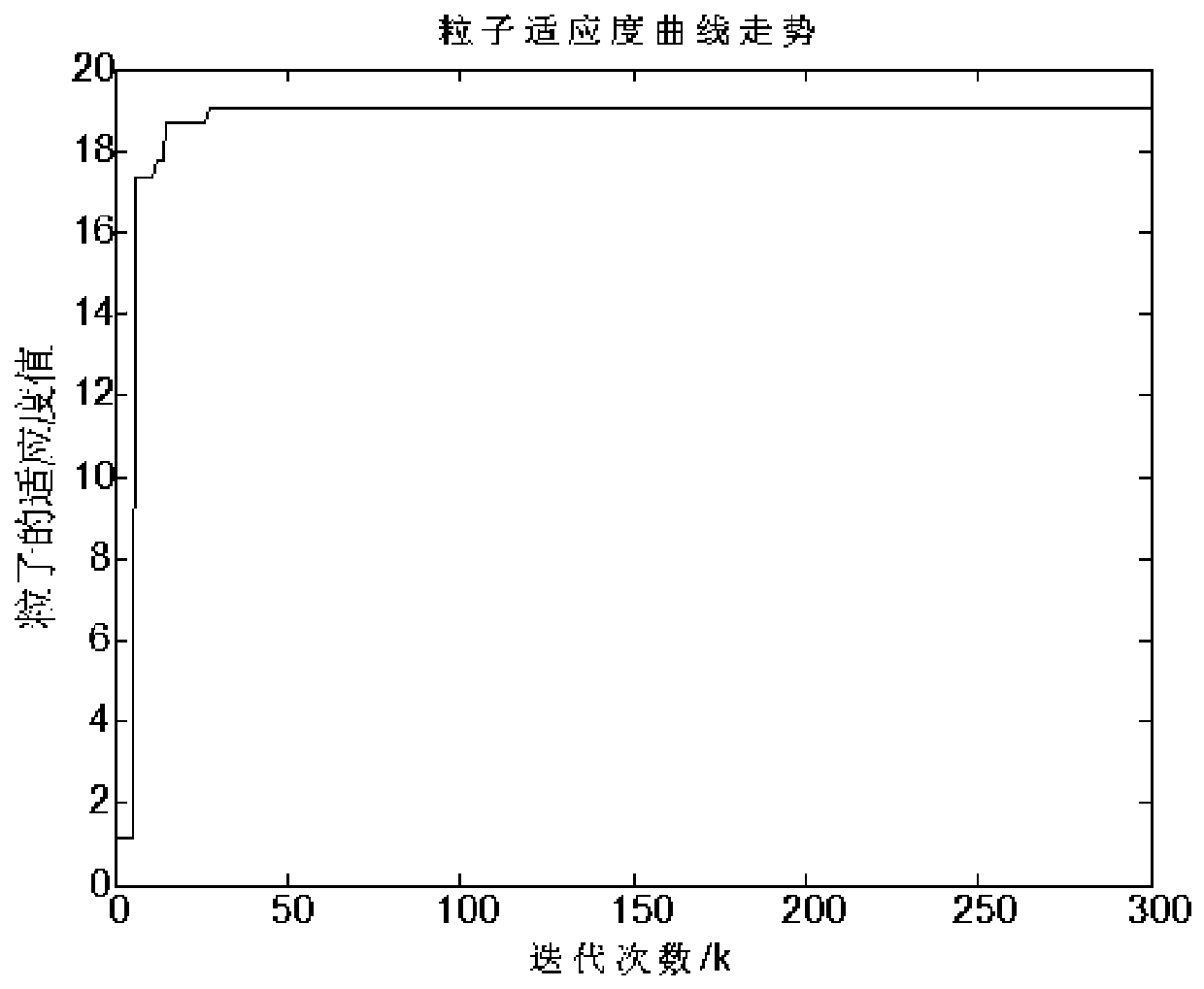A Method of Magnetotelluric Signal Denoising Based on Sparse Decomposition Threshold Setting
A sparse decomposition and magnetotelluric technology, applied in electric/magnetic exploration, geophysical measurement, acoustic reradiation, etc., can solve the excessive distortion of apparent resistivity-phase curve and affect the interpretability of underground electrical structure acquisition data Reliability, poor applicability and other issues
- Summary
- Abstract
- Description
- Claims
- Application Information
AI Technical Summary
Problems solved by technology
Method used
Image
Examples
Embodiment Construction
[0069] The present invention will be further described below in conjunction with examples.
[0070] A magnetotelluric signal denoising method based on sparse decomposition threshold setting provided by the present invention divides it into a strong interference signal segment and a non-strong interference signal segment (regarded as a non-interference signal interval) for the time series of the magnetotelluric signal , and targeted processing for strong interference signal segments, non-strong interference signal segments are not processed, as much as possible to retain the original magnetotelluric data that is almost not subject to electromagnetic interference, the results are more reliable and can more truly reflect the measurement point itself inherent electrical structural information. Among them, the targeted denoising process of the strong interference signal segment uses orthogonal matching pursuit and niche particle swarm algorithm to perform sparse decomposition to ob...
PUM
 Login to View More
Login to View More Abstract
Description
Claims
Application Information
 Login to View More
Login to View More - R&D
- Intellectual Property
- Life Sciences
- Materials
- Tech Scout
- Unparalleled Data Quality
- Higher Quality Content
- 60% Fewer Hallucinations
Browse by: Latest US Patents, China's latest patents, Technical Efficacy Thesaurus, Application Domain, Technology Topic, Popular Technical Reports.
© 2025 PatSnap. All rights reserved.Legal|Privacy policy|Modern Slavery Act Transparency Statement|Sitemap|About US| Contact US: help@patsnap.com



